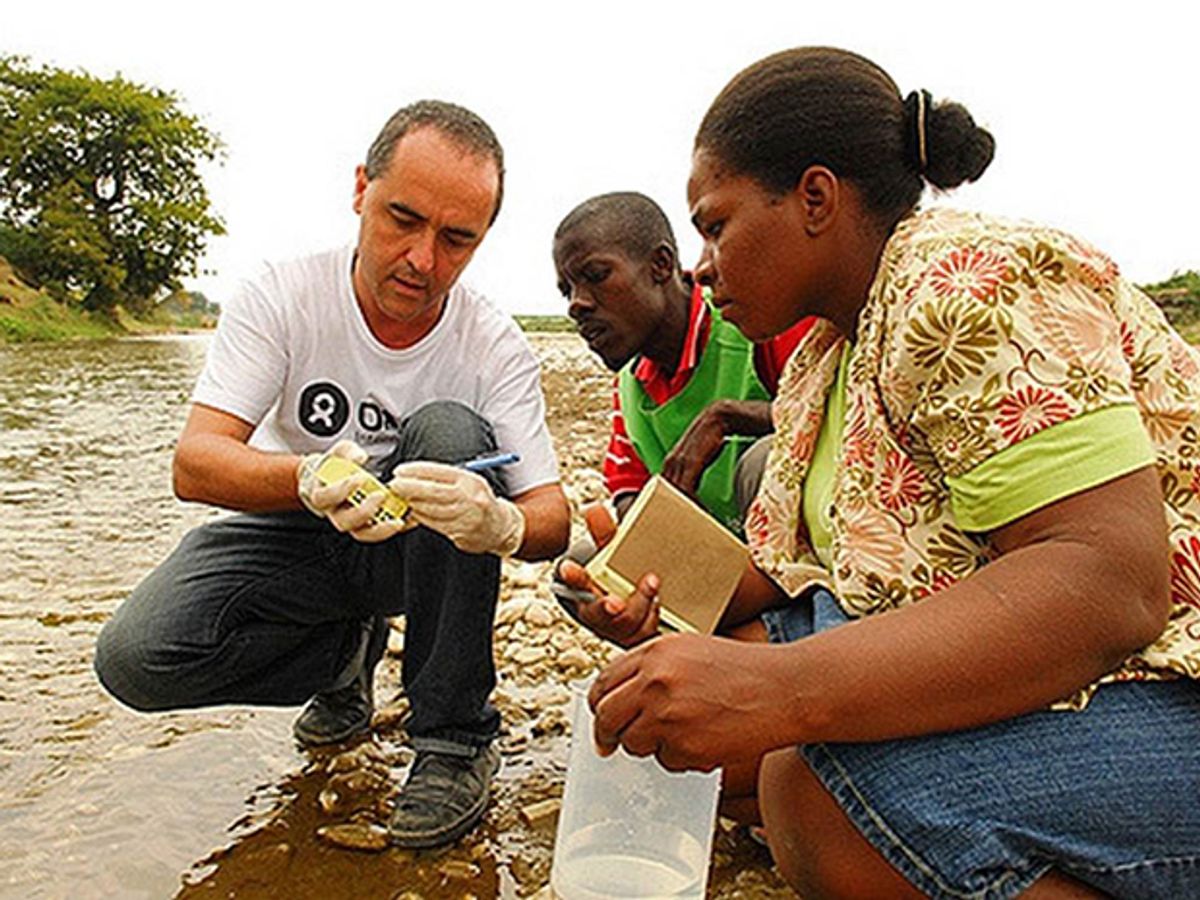Global health experts don’t worry about if a major infectious disease outbreak will occur; it’s just a matter of when.
A daunting barrier in that ongoing fight against infectious diseases—including malaria, dengue fever, Zika and more—is the ability to detect infectious agents in the environment before an outbreak begins.
In June, the Vodafone Americas Foundation recognized a technology attempting to tackle exactly that problem in its ninth annual Wireless Innovation Project competition. A Purdue University spin-off called PathVis won first place and $300,000 for a smartphone-based platform designed to enable anyone to rapidly measure the level of a pathogen in an area and report back to health authorities with real-time data of when and where that pathogen was detected.
Thanks to the award money, the team will take their prototype to Haiti in November and work with the Emerging Pathogens Institute to test its ability to detect cholera bacterium in water. Cholera is a highly infectious disease marked by watery diarrhea that can kill within hours if left untreated. It is transmitted through contaminated food and water. The World Health Organization estimates that there are up to 143,000 deaths each year due to cholera.
The technology stems from work done over the last several years in the biomedical engineering labs of Jacqueline Linnes and Tamara Kinzer-Ursem at Purdue. In collaboration with Purdue mechanical engineer Steven Wereley and his postdoc Katherine Clayton, Kinzer-Ursem developed a method to measure Brownian motion, the erratic and random movement of microscopic particles in a fluid.
The team first used the method to measure the presence of proteins in solution: When proteins fall apart in the presence of tiny beads—from 1 micron down to 100 nanometers—in a liquid, it increases the viscosity of the solution, and the researchers were able to detect the slowing motion of the beads.
Kinzer-Ursem then enlisted Linnes, an expert in pathogen detection, to apply the same idea to detect DNA in solution. The team perfected their technique under a microscope, but then decided they could shrink the technology.
PathVis from Vodafone Americas Foundation on Vimeo.
“All we needed was a microscope, a camera to capture images, and a computer to crunch the algorithms. And we thought, well, we carry these computers and cameras around in our pockets everyday. Why not make this portable?” recalls Kinzer-Ursem.
So they adapted the system for a smartphone. A user puts a sample of liquid, say, potentially contaminated water, into a small microfluidic chip attached to a smartphone. If cholera bacterium DNA is present, a chemical reaction on the chip will copy that DNA over and over, producing many DNA strands that increase the viscosity of the solution. If the bacterium is not present, there is no change in the liquid.

The user then takes a short video of the sample using the phone’s camera equipped with a small microscope. An accompanying app processes and analyzes the video for changes in Brownian motion of the liquid. The app then flags the sample as contaminated or not.
Currently, the platform provides results in less than 30 minutes, compared to the five days it normally takes to send a water sample to a lab and get a result, says Kinzer-Ursem. Plus, a GPS tag in the app records the exact location where the sample was taken, so that locations can be compiled in a map for health officials. “The whole idea is that they can use this information to efficiently target where their resources need to go,” she notes.
Cholera isn’t the only disease in PathVis’s crosshairs. The team is also adapting the technology to detect malaria in patient blood samples in collaboration with Indiana University’s School of Medicine, and hopes to also apply it to HIV and dengue virus detection.
Megan is an award-winning freelance journalist based in Boston, Massachusetts, specializing in the life sciences and biotechnology. She was previously a health columnist for the Boston Globe and has contributed to Newsweek, Scientific American, and Nature, among others. She is the co-author of a college biology textbook, “Biology Now,” published by W.W. Norton. Megan received an M.S. from the Graduate Program in Science Writing at the Massachusetts Institute of Technology, a B.A. at Boston College, and worked as an educator at the Museum of Science, Boston.



